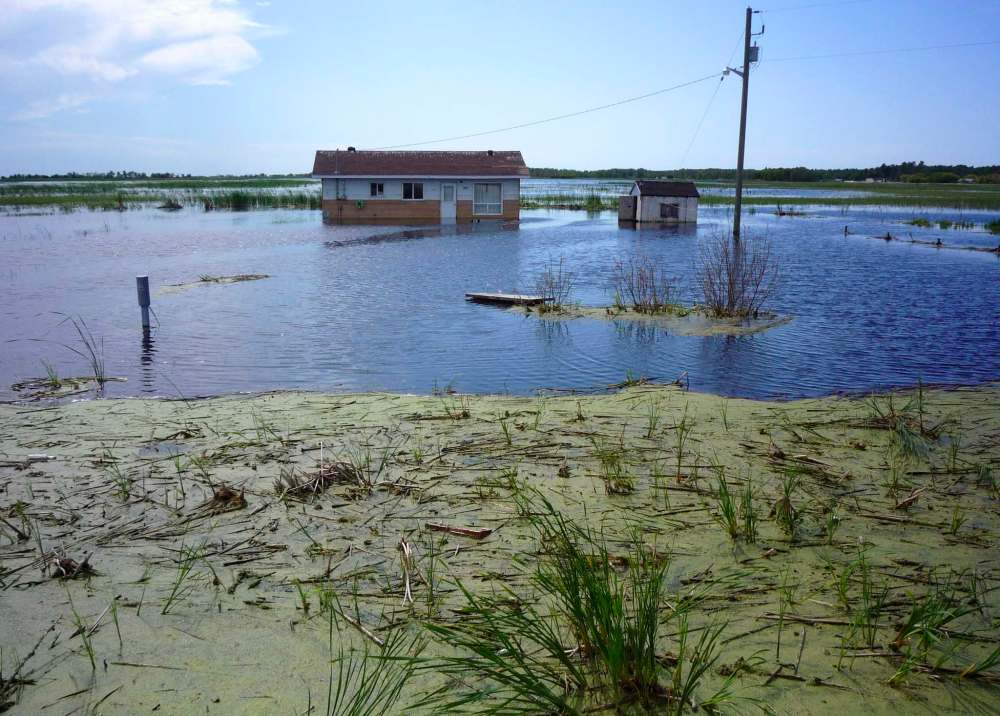Flood victims to finally have homes
Lake St. Martin expected to have 150 new houses ready by next fall
Advertisement
Read this article for free:
or
Already have an account? Log in here »
To continue reading, please subscribe:
Monthly Digital Subscription
$1 per week for 24 weeks*
- Enjoy unlimited reading on winnipegfreepress.com
- Read the E-Edition, our digital replica newspaper
- Access News Break, our award-winning app
- Play interactive puzzles
*Billed as $4.00 plus GST every four weeks. After 24 weeks, price increases to the regular rate of $19.00 plus GST every four weeks. Offer available to new and qualified returning subscribers only. Cancel any time.
Monthly Digital Subscription
$4.75/week*
- Enjoy unlimited reading on winnipegfreepress.com
- Read the E-Edition, our digital replica newspaper
- Access News Break, our award-winning app
- Play interactive puzzles
*Billed as $19 plus GST every four weeks. Cancel any time.
To continue reading, please subscribe:
Add Free Press access to your Brandon Sun subscription for only an additional
$1 for the first 4 weeks*
*Your next subscription payment will increase by $1.00 and you will be charged $16.99 plus GST for four weeks. After four weeks, your payment will increase to $23.99 plus GST every four weeks.
Read unlimited articles for free today:
or
Already have an account? Log in here »
Hey there, time traveller!
This article was published 22/11/2016 (3265 days ago), so information in it may no longer be current.
OTTAWA — More than half the residents who were flooded out of their homes in Lake St. Martin First Nation more than five years ago should be able to move to a new home in a new community within a year.
Indigenous and Northern Affairs Canada issued a tender earlier this month to build 150 new homes on the reserve’s new land, located adjacent to the community destroyed by flooding in May 2011. The tender was to have closed Tuesday but was extended by a week-and-a-half after a meeting with more than 20 interested companies. The winning bid should be determined before the end of December and construction will be timed for completion next fall.
“It is anticipated that housing and essential infrastructure will be in place and Lake St. Martin residents can begin returning to the community by the fall of 2017,” INAC Manitoba region spokeswoman Ellen Funk said in an email.

The process of rebuilding the community has been fraught with problems, including mismanagement of the program by the Manitoba Association of Native Firefighters, which gave up control of the evacuee program in June 2013. The Canadian Red Cross took over. An audit of the INAC program overseeing the evacuations and rebuilding, dubbed Operation Return Home, found the whole program was poorly resourced, plagued with delays and very disorganized.
A spokesman for the program, who requested anononymity, said Tuesday everyone involved is “anxious to get things moving.
“There is just no good answer as to why this is taking so long,” he said.
The tender, issued Nov. 1, was for 100 1,140 square-foot three-bedroom homes, 40 1,560-sq.-ft. four-bedroom homes and 10 1,740-sq.-ft. five-bedroom homes. It is expected they will able to house more than 660 people, or slightly more than half the 1,232 Lake St. Martin evacuees who remain on federal assistance. All of the evacuees previously expressed a desire to move back to the First Nation. They’ll be offered space when the homes are ready, and will be able to move in. Anyone who declines will be removed from the evacuee lists.
A second subdivision of up to 150 houses is planned for the new reserve, which is located on higher land adjacent to the flooded property. The tender for that construction is expected soon.
The 2011 flooding forced more than 4,000 residents to leave several First Nations in the Interlake. As of the end of October, there were still 1,987 evacuees from six reserves receiving assistance from Ottawa. Lake St. Martin accounts for almost two-thirds of the evacuees. Dauphin River (236 evacuees) and Little Saskatchewan (420) account for the bulk of the rest, followed by Peguis (95), Pinaymootang (three) and Ebb and Flow (one).
INAC has spent almost $150 million for housing and other costs for the evacuees, and that bill rises by $1.6 million every month. Many evacuated residents lived in hotel rooms for months, some even years, although all but 45 are now in private accommodation.
A spokesman for the program overseeing the plans said Tuesday most of the Little Saskatchewan evacuees should be able to move home before the spring because 77 homes are almost finished. There are 41 modular homes already in Dauphin River and evacuees can start moving into those likely before the end of the year.
mia.rabson@freepress.mb.ca
History
Updated on Tuesday, November 22, 2016 4:14 PM CST: Updates
Updated on Tuesday, November 22, 2016 7:52 PM CST: fixed number of homes
Updated on Tuesday, November 22, 2016 9:15 PM CST: updated

